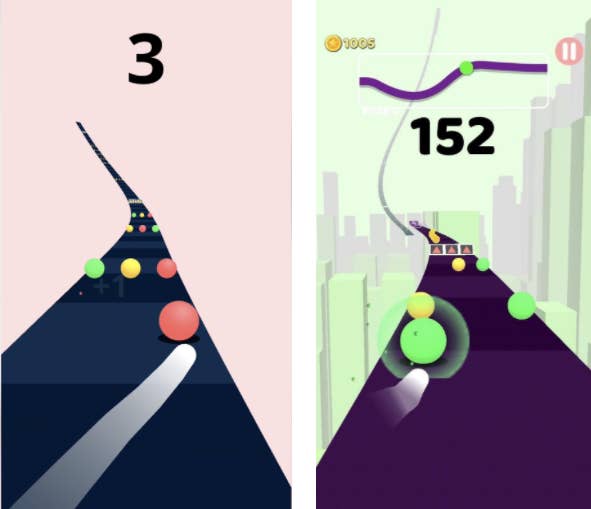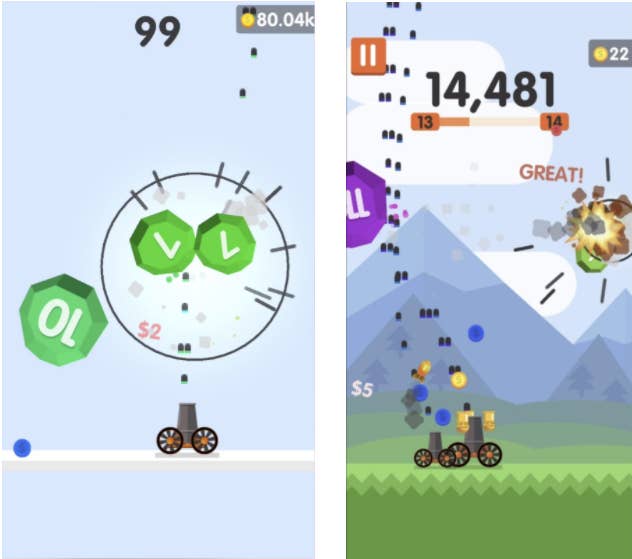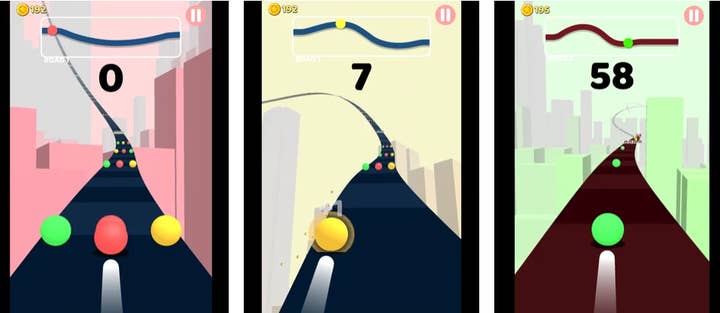Balancing data and creativity: Is there a magic formula for hypercasual games?
Voodoo's Antonin Chapelon details what it takes to stay at the top of the hypercasual mobile market
Hypercasual is undeniably a data-driven industry. To reach the top of the charts you need a performance-driven mindset, a decision-making process based almost entirely on data, and the ability to constantly test and retest your games.
Without a low cost-per-install (CPI), high Day 1 and Day 7 retention rate, as well as a strong playtime per user per day, even the most brilliantly creative games might not be successful. But you can't use data alone to create hypercasual hits, otherwise there would be little to no originality, and every game in the app store rankings would look the same.
When creating these bite-sized and easy-to-play games you need to be inventive and, above all, creative to get your game to stand out in an increasingly competitive market. So, how can you strike the perfect balance between data analysis and creativity?
All hypercasual developers should be working to optimise their games and maximise their potential, using the extensive amount of data available to them to make smart technical and artistic decisions that impact a game's success and turn them into hits. But when it comes to balancing data and creativity, there isn't really a magic formula that fits all. Instead, it's about learning the combination that fits the needs of each development cycle.
Small, creative changes can have a huge impact
Don't underestimate the impact that creativity, even in small doses, can have on a hypercasual game.
Adding regular, both big and small, gameplay upgrades over time can completely transform a game. Whether it's adding simple mechanics such as jumps between levels, new obstacles or corners, each of these makes the game more interesting and can have a huge impact on retention. The addition of new features also helps strike the balance between exhilaration and frustration, keeping players coming back for more to beat their own high scores and unlock new cosmetic upgrades. We applied this thinking to Color Road, adding new features to give players something new to look forward to and increase retention.

Timing your creativity is key
All of these creative additions are great, but you have to be careful with your timing. If you're making big creative changes several weeks or months after the game has been launched, when players are already familiar with it, it can have a negative impact. If the changes you make are too radical, then it can have the opposite effect and players can simply switch off, so you need to get the balance right.
So, timing is key when it comes to creativity. If you are too creative, too late in the process, players might reject the game. You have to make the right choices at the beginning, and work with what you've got.
Trust the data and let it guide you when making big decisions
Sometimes hypercasual games don't perform as well at launch as expected. This doesn't mean that it's a bad game, it just means that you need to dive into the data to help you turn things around.
Ball Blast is a good example. A 'swipe-to-shoot' game, it didn't perform that well until six months after its launch, which is an incredibly long time in the hypercasual world. When faced with this kind of slow performance, the first thing you need to do to make sure your game reaches its full potential is to work on the gameplay and meta-features. Actions such as the addition of power ups and boosts can make the game more exciting, alongside spending time fine-tuning the overall gameplay. If you want to go a step further you can add some more classic elements such as energy bars, extra challenges, bonus rounds and daily missions to keep players coming back for more. Getting that balance right can be the difference between high and low engagement rates.

It's equally important to pay attention to the data so you know when to stop. If the data isn't improving or even keeping up with the changes you're making, you have to trust that and stick with what you know.
Keep your eyes on the ball, and you will succeed
The onboarding process is just as important as creativity and data when it comes to the success of a hypercasual game, but there are many different ways of doing it.
When updating a game with new gameplay mechanics or overhauls, it is vitally important to allow a user to quickly understand and get to grips with these new additions. Applying simple, tried and tested onboarding principles to increase retention might work for one title, however this may have little to no impact on another.
These alternative methods include presenting each gameplay element gradually through early levels, ensuring that the player becomes familiar with the controls in a 'non-lethal' environment. Adding elements and obstacles gradually, one after the other, creates a much smoother first time user experience. This approach typically means that players aren't too surprised when facing new obstacles, and therefore aren't put off by playing any further.
This approach might not work for everyone though and, once again, it's a fine balancing act between making the game challenging and easing players into it. For example, you might send your game with easy onboarding methods out to test, and receive negative feedback from players about speeding through levels due to existing familiarity with the gameplay, which can spoil the suspense. This creates problems with engagement and retention as players becoming too good at a game too soon simply isn't compatible with the hypercasual, free-to-play business model.
The key is to be firmly aware of what you need to do on a case by case basis instead of blanket solutions, and keep your eye on the ball at all times. Being too creative with the onboarding process can take you in the wrong direction if you're not careful, and lead to failure.
Getting the right balance between data and creativity can be difficult in such a data-driven industry. They are not necessarily complementary, and being super creative doesn't always lead to guaranteed success. But while there is no magic formula for how to master the balance between the two, there are hundreds of tips and tricks that you can learn with experience.
The most important piece of advice we have learnt over the years would be to keep testing fast, and learn from your experiences. Data can surprise you, but you can use it to shape and scale your creativity in the creation of hit games.
Antonin Chapelon is product manager in Voodoo's game ops team. He joined the company in 2017 as publishing manager.
